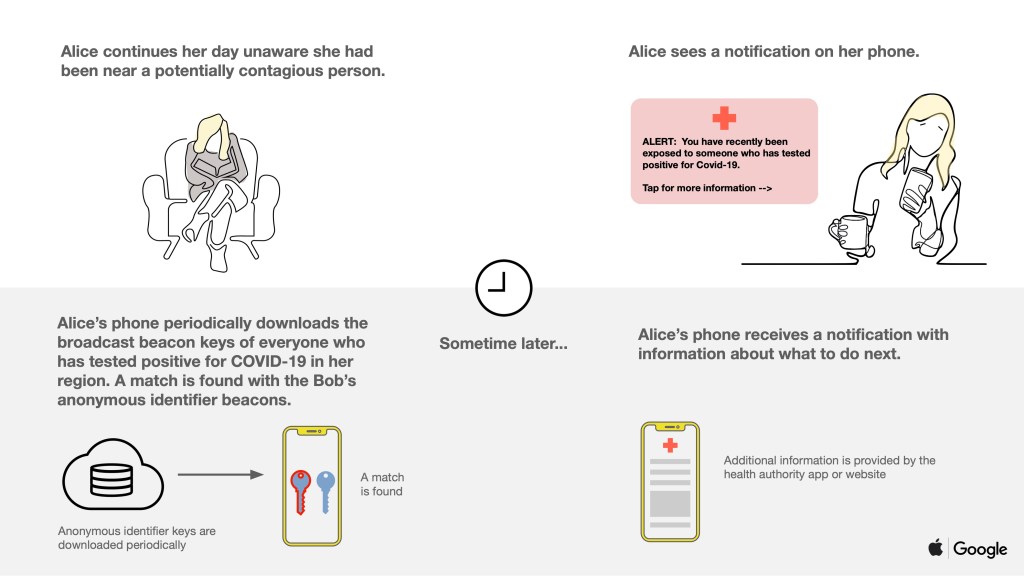You can read our most essential coverage of the coronavirus/covid-19 outbreak for free, and also sign up for our coronavirus newsletter. But please consider subscribing to support our nonprofit journalism.
To build the voluntary contact tracing network, the new tech will rely on bluetooth, typically used for short-distance communication between devices. When a person tests positive for the virus, they enter that information into an app on their phone, and other people who have been near them in the previous 14 days are alerted, while keeping the original contact’s information private.

At first, the software will simply consist of an API (application programming interface) that lets Apple and Android phones, which use distinct operating systems, swap data with each other. Users will have to separately download apps created by health authorities that use the API as the underlying system for exchanging data. The data will be accessible to public health officials but will not include personally identifiable information to either the companies or governments. Later on, the two firms plan to add contact-tracing software directly into the operating systems, so that it will be on more people’s phones by default.
Wide adoption will be necessary to make this an effective tool. Singapore’s app, TraceTogether, which similarly uses Bluetooth to track the disease, was adopted by 12% of the population. Health authorities will also need to create apps that can use the API. Finally, it all still hinges on there being widespread, rapid, reliable testing that lets people know they’re sick in the first place.
The companies have released draft technical documentation on the Bluetooth and cryptography specifications and framework documentation.